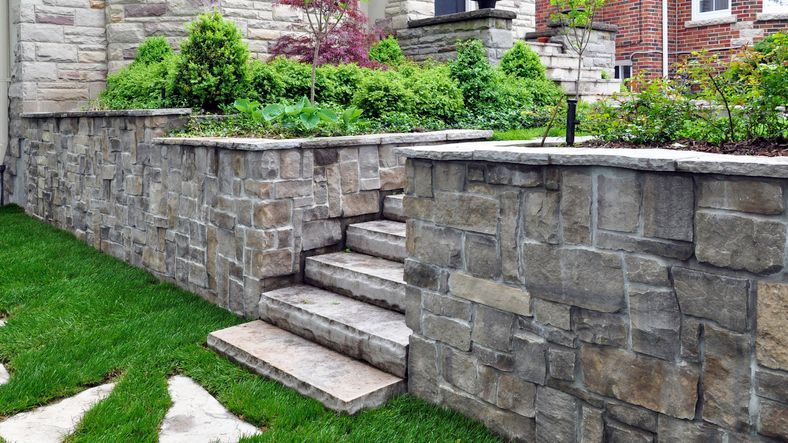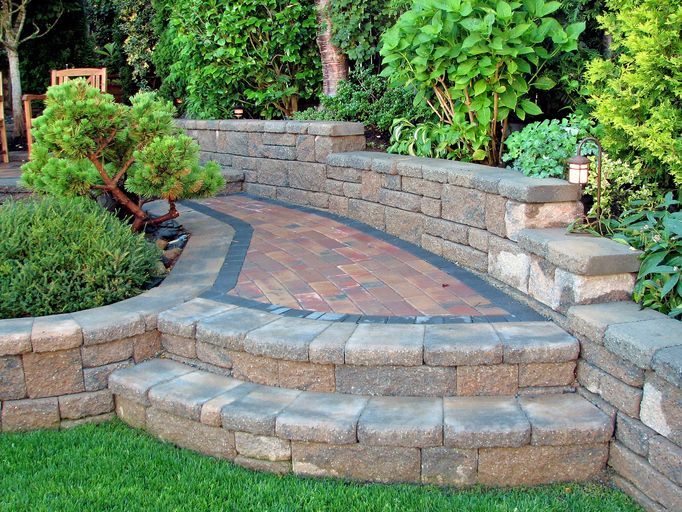The Process of Building a Retaining Wall: What to Expect

Retaining walls are essential structures that help prevent soil erosion and keep landscapes in place. Whether you're building a retaining wall for aesthetic purposes or functional reasons, it's essential to understand the process involved.
In this article, we'll discuss what to expect when working with a professional to build a retaining wall.
Step 1: Site Assessment
The first step in constructing your retaining wall is to assess the site where it will be constructed. This involves evaluating the soil type, drainage patterns, and potential load-bearing requirements. A professional contractor will also consider existing structures or utilities near the construction site. The assessment is crucial in determining the appropriate design and materials for the project.
Step 2: Design and Planning
Once the site assessment is complete, your contractor will work with you to create a wall design that fits your specific needs and budget. Retaining walls can vary in size, shape, and material, so it's essential to clearly understand what you want before moving forward with construction. Your contractor may also obtain necessary permits from local authorities during this stage.
When designing a retaining wall, several factors must be considered, such as the desired height and slope. These factors will determine the required width and reinforcement needed to ensure the structure's stability and safety.
Additionally, drainage is a crucial element in retaining wall design. Proper drainage prevents water from building up behind the wall, which can cause pressure and, in turn, damage over time. Your contractor may include drainage systems such as weep holes or gravel-filled trenches to redirect water away from the wall.
Step 3: Materials
Retaining walls can be constructed using a variety of materials, including concrete blocks, natural stone, brick, wood, or recycled materials. Each material has its own unique characteristics and aesthetic appeal. Your contractor will help you choose the best option based on your design preferences, budget, and the specific needs of your project.
Concrete blocks are popular for retaining walls due to their durability and affordability. They come in various sizes, shapes, and colors, making it easy to customize your wall's look. Natural stone is another great wall material option, as it adds a timeless beauty to any landscape. However, natural stone can be more costly than other materials and requires skilled labor for installation.
Step 4: Construction Process
Now that we've determined your retaining wall's design, location, and materials, it's time to start the construction process. The first step is to excavate the area where the retaining wall will be built. This involves removing excess soil and preparing a level base for the wall.
Next, we will lay down a layer of gravel or crushed stone on the excavated area. This will act as a stable foundation for your wall and help with drainage. How thick this layer needs to be will depend on the length and height of the retaining wall.
We recommend adding a drainage system behind the retaining wall to redirect any excess water away from your property. This could include installing perforated pipes or creating a slope on the backside of the wall to allow water to naturally drain away.
After the base is prepared, it's time to start building the actual wall. We start by laying out the first row of blocks or stones, using a carpenter's level to ensure they are level and straight.
We continue building up the wall, staggering each row so that joints are not aligned. This adds stability to the structure and creates an aesthetically pleasing design. Using a rubber mallet, we tap each block or stone into place, making sure they are snug and secure.
As we build the wall, we backfill behind it with gravel or crushed stone. This helps to reinforce the structure and prevent soil erosion. It's essential to compact this backfill periodically using a tamper tool to ensure stability.
Once the desired height is reached, we cap off the top of the retaining wall with either capstones or coping stones for a finished look.
Work With McCluskey Contracting for Retaining Wall Installation
Remember, retaining walls are functional and can add aesthetic appeal to your outdoor space. With proper retaining wall construction and maintenance, they can last for many years. So, the next time you have a sloped area on your property, consider installing a retaining wall. And when you do, trust the experts at McCluskey Contracting to get the job done right. Contact us today to schedule a consultation and plan your new retaining wall.
You might also like
McCluskey Contracting Concrete Blog



